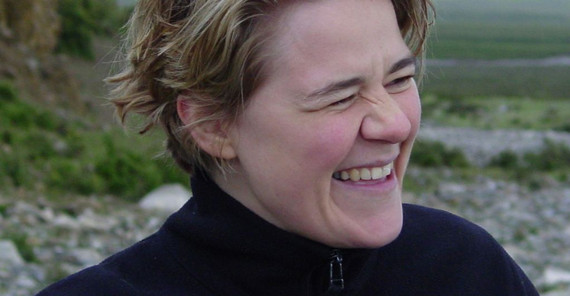She measures trees on the northern edge of Siberian forests. She drills in lake sediments on the Tibetan Plateau and sometimes goes by helicopter to get a better overview. The palaeoclimatologist Ulrike Herzschuh is not an adventurer but a down-to-earth biologist and mother of two. She was the first to get the Young Investigator Award of the State of Brandenburg and was awarded the Albert Maucher Prize of the German Research Foundation. Her research interest is climate in prehistoric times. She looks way back into the past to be able to make predictions for future developments.
Since 2005 the scientist from the Alfred Wegener Institute for Polar and Marine Research has had close ties to the University of Potsdam. First she was junior professor and now has been professor of palaeoecology and palaeoclimatology at the Institute of Earth and Environmental Sciences for a year. She appreciates close contact to students. She knows how to fill them with enthusiasm for her projects and can often win them as likeminded collaborators. Two women, students at the university, who Ulrike Herzschuh employed as scientific assistants with the Maucher prize money, are among the group of doctoral students who accompany her on expeditions to the Alpine and Arctic regions of Asia. At Qinghai Lake on the Tibetan Plateau, one of the largest salt lakes in the world, the palaeoclimatologist is investigating the effect of global warming on the monsoon system. The semi-arid landscape is considered a sensitive area. Even minor changes in humidity may have serious consequences like heavy rainfall in India or huge dust storms over China. Professor Ulrike Herzschuh investigates what climatic conditions led to the development of certain types of vegetation in the past and she looks for comparable types and situations in our present vegetation. Fossil finds like pollen or chironomid midges in lake sediments are sources of information for her.
A core of half a metre is sometimes enough to look 1,000 years back into climate history, as is the case in northern Siberia. There she analyses the connection between forest development and the chemical composition of lakes. When she and her colleagues pitch their tents in the wilderness in summer to measure trees and explore vegetation, they always do this together with researchers from Yakutsk University. Ulrike Herzschuh would hate to miss this longstanding cooperation: A Russian biologist, for instance, is investigating the well-preserved diatoms in lake sediments. They are typical indicators of the environmental conditions in different periods and offer valuable clues.
Ulrike Herzschuh wants to find out how the Siberian timber line moves further to the north in the course of climate warming. If more trees grow there, more sunlight will be absorbed, thus increasing the warming. Since the forest “migrates” very slowly, this effect will only start in 100 years or later. This is an effect with a delay that is difficult to calculate in present climate models. Such long-term processes have consequences that are not easy to predict, for Herzschuh an appealing challenge that raises theoretical demands.
After all, the permafrost regions of Siberia are considered key regions for global climate change. Ulrike Herzschuh has found important partners for her work in the Potsdam Research Network. At the university, she cooperates not only with geoscientists but also with biologists like the vegetation ecologist Professor Florian Jeltsch and the evolution scientist Professor Ralph Tiedemann. With Professor Tiedemann she established a palaeogenetic laboratory. A second one is being established at the Alfred Wegener Institute and will be open to scientists of the university, too.
This research is linked to the research initiative NEXUS: Earth Surface Dynamics, which clusters approaches from various scientific disciplines in the Berlin-Brandenburg area within the overarching theme of Earth surface dynamics. The University of Potsdam, along with its partnering institutions the Helmholtz-Centre Potsdam - German Research Centre for Geosciences (GFZ), the Alfred Wegener Institute Helmholtz Centre for Polar and Marine Research (AWI) and partners from the Potsdam Institute for Climate Impact Research (PIK), the Museum für Naturkunde - Leibniz Institute for Evolution and Biodiversity Science (MfN) and the Technische Universität Berlin (TUB) therefore combines the outstanding expertise from geo-, bio-, climate and data sciences.
Text: Antje Horn-Conrad
Translation: Susanne Voigt
Published online by: Agnetha Lang
Contact for the online editorial office: onlineredaktionuuni-potsdampde

